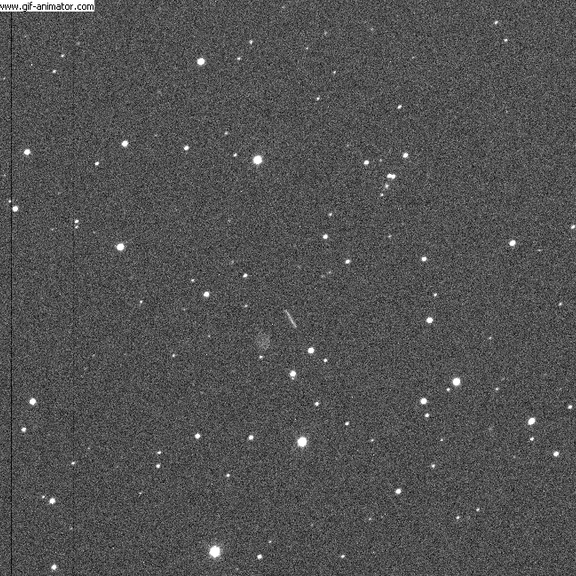All
All
Stories, updates, insights, and original analysis from The Planetary Society.
Updates on the 2007 Shoemaker NEO Grant Recipients (27 April 2009)
Our 2007 Shoemaker NEO Grant winners have been extremely busy over the past two years. Take for example Quanzhi Ye of Guangzhou, China: He was only 18 when he received the award but already the principal investigator of the sky survey at the Lulin Observatory in Taiwan.
Updates on the 2007 Shoemaker NEO Grant Recipients (27 June 2008)
Amateur astronomers play a critical role in retiring the risk of impact from near-Earth objects. When the Shoemaker NEO Grant program began in 1997, the focus was on finding previously undiscovered objects one kilometer in diameter and larger. Thanks to professional NEO survey programs like LINEAR (the Lincoln Near-Earth Asteroid Research program run by MIT’s Lincoln Laboratories) and the Catalina Sky Survey (run from the University of Arizona’s Lunar and Planetary Laboratory), the goal of discovering the vast majority of large NEOs is within reach, and the focus of the Shoemaker NEO Grant Program has shifted to astrometric follow-up and physical studies.
LPSC: Thursday: Rovers, Titan, Mars, Venus Express, Neptune
I spent a large portion of the day at the Lunar and Planetary Institute's library and presented my own poster during the poster sessions, so my coverage of Thursday's sessions is limited.
Updates from Past Recipients of the Shoemaker NEO Grants (1 March 2007)
Thanks to The Planetary Society Shoemaker Grant, the 1.06-meter KLENOT telescope optics was completed at the Klet Observatory. Regular observations of the KLENOT project started in March 2002 under the new IAU/MPC code 246, so we can now present results covering 5 years of this work.
Updates from Past Recipients of the Shoemaker NEO Grants (18 July 2006)
Using the Shoemaker NEO Grant funds, Minor Planet Research has purchased a 1.7-terabyte data server for our Asteroid Discovery Station (ADS) education outreach program Through the generosity of Dr. Philip Christensen, this server is housed at the Mars Space Flight Facility (MSFF) at Arizona State University in Tempe, Arizona.
Updates from Past Recipients of the Shoemaker NEO Grants (17 August 2005)
Following last year's Potentially Hazardous Asteroid and a few other non-main-belt discoveries, I looked into what improvements I could make to more efficiently image the sky. The major advance involved the design of a 3-lens corrector comprising 2 stock lenses and a custom lens I made myself.
Astronomers Revise Torino Scale Asteroid Advisory System
Astronomers have revised the Torino scale, the color-coded advisory system to assess the threat of asteroids and other near-Earth objects (NEOs) to make it easier for the public to understand.
Close Your Left Eye, Then Your Right: Simultaneous Observations of Asteroid 4179 Toutatis from Two Chilean Telescopes Demonstrate Parallax
This morning, asteroid 4179 Toutatis was so close to Earth that simultaneous observations from two telescopes in the same country could show parallax that is obvious even to the least experienced observer. The two telescopes belong to The European Southern Observatory and are located at La Silla and Paranal in Chile
Very Close Approach by Asteroid 4179 Toutatis: It's Not a Crisis, It's an Opportunity
On Wednesday, September 29, Earth will dodge a cannonball: the Near-Earth Asteroid known as 4179 Toutatis will buzz by at a distance only four times the distance from the Earth to the Moon -- about one and a half million kilometers, or about a million miles. But, as the wisdom goes,
Updates from Past Recipients of the Shoemaker NEO Grants (16 April 2004)
2003 was a good year with 50,779 asteroid astrometric observations submitted, including known NEOs and the discovery of a new Aten-class object, 2003 UY12. Based upon the volume of astrometric observations submitted, observatory code 683 was the world's eighth most productive asteroid astrometry station.
Updates from Past Recipients of the Shoemaker NEO Grants (20 March 2001)
I just wanted to express my appreciation again to The Planetary Society for the Shoemaker Grant. Apogee Instruments delivered the AP6Ep purchased with the grant on 9 March 2001. Critical mass on all of the other components associated with implementing the proposal was reached last week.


 Explore Worlds
Explore Worlds Find Life
Find Life Defend Earth
Defend Earth


 Sun
Sun Mercury
Mercury Venus
Venus Earth
Earth Mars
Mars Jupiter
Jupiter Saturn
Saturn Uranus
Uranus Neptune
Neptune Small Bodies
Small Bodies



